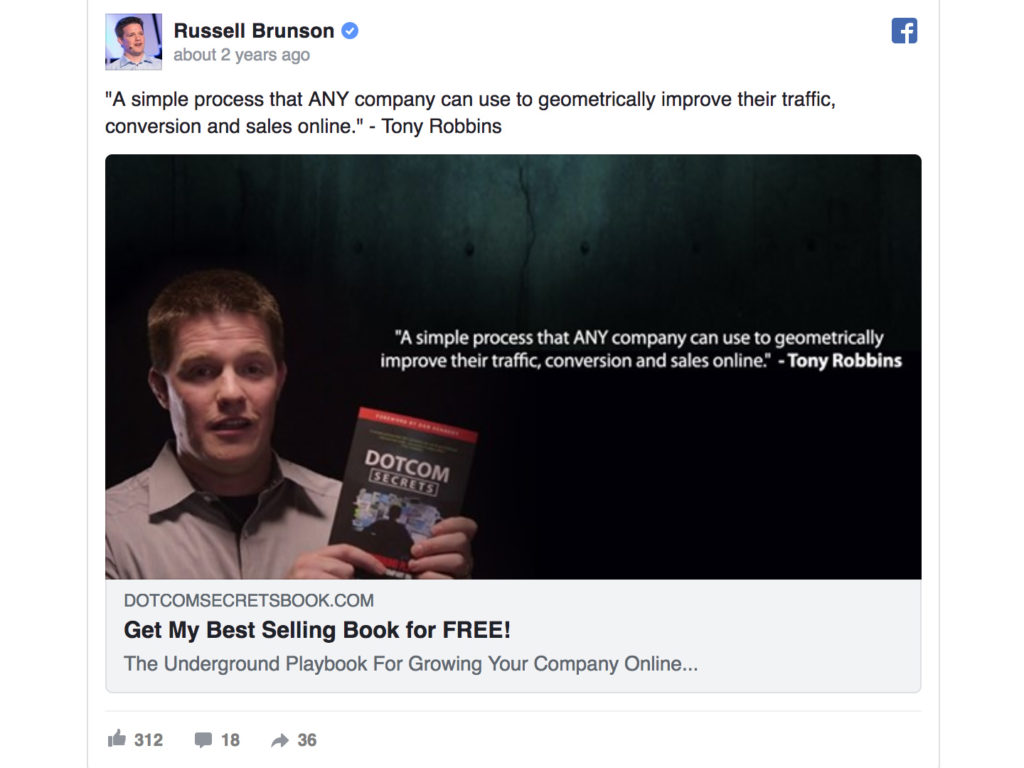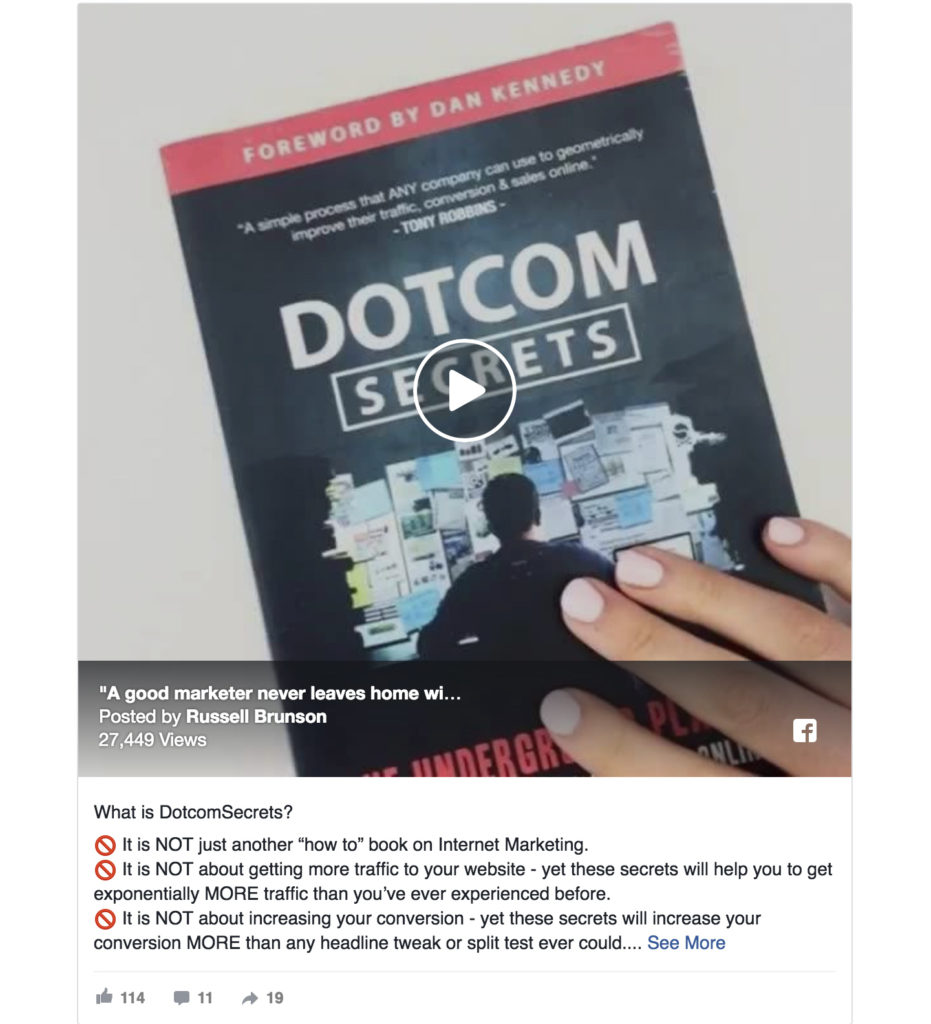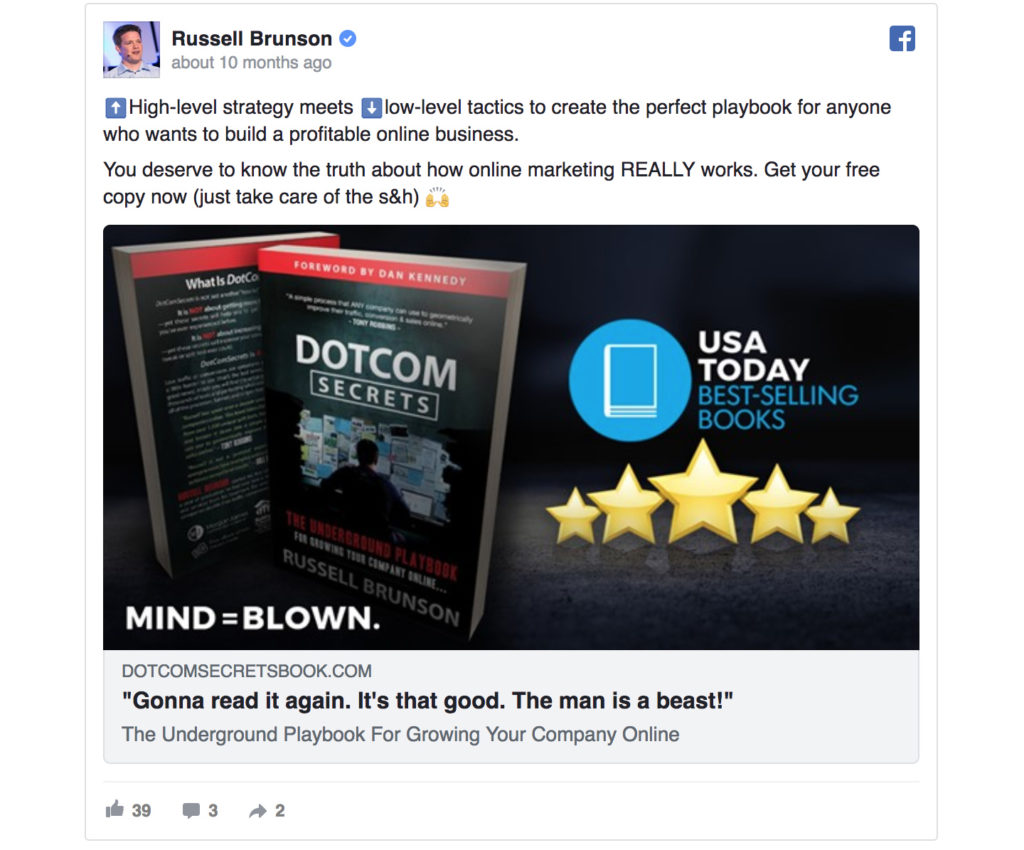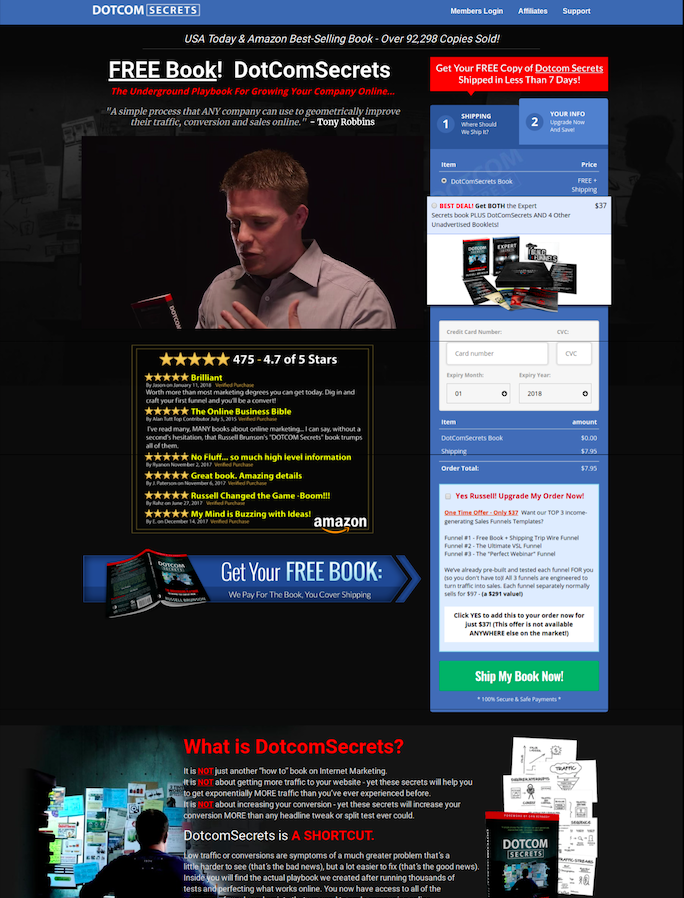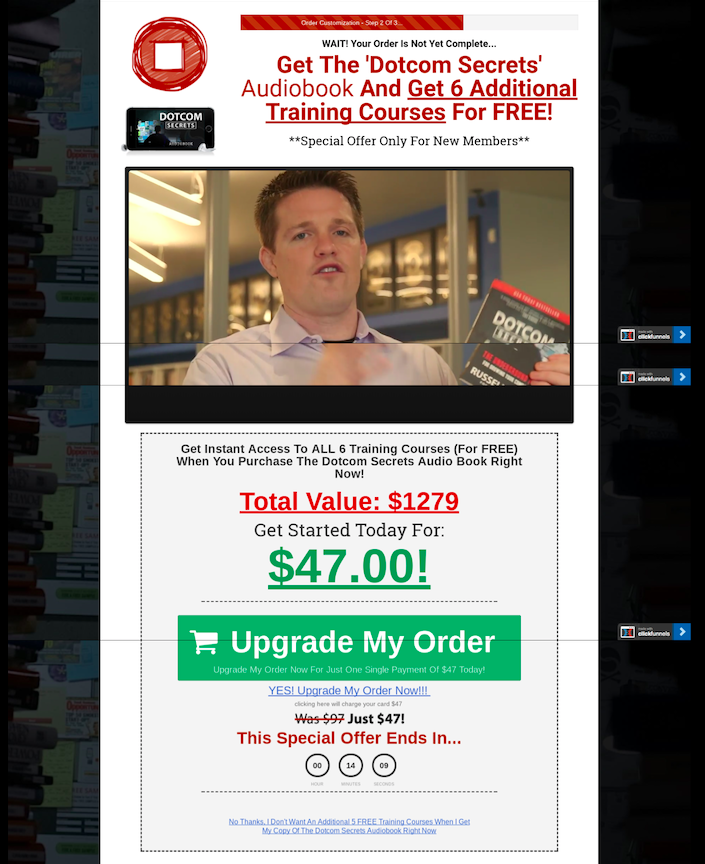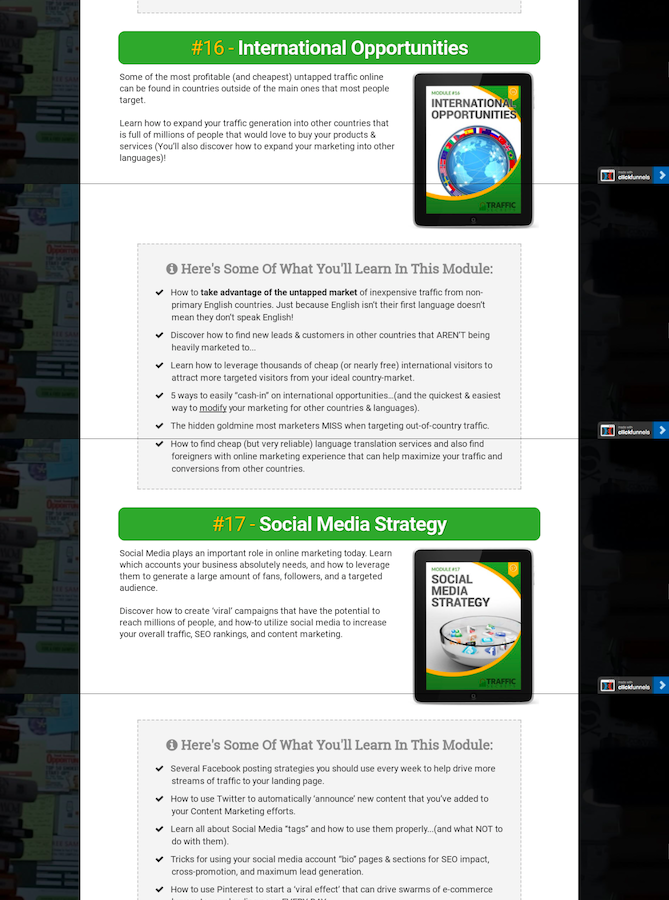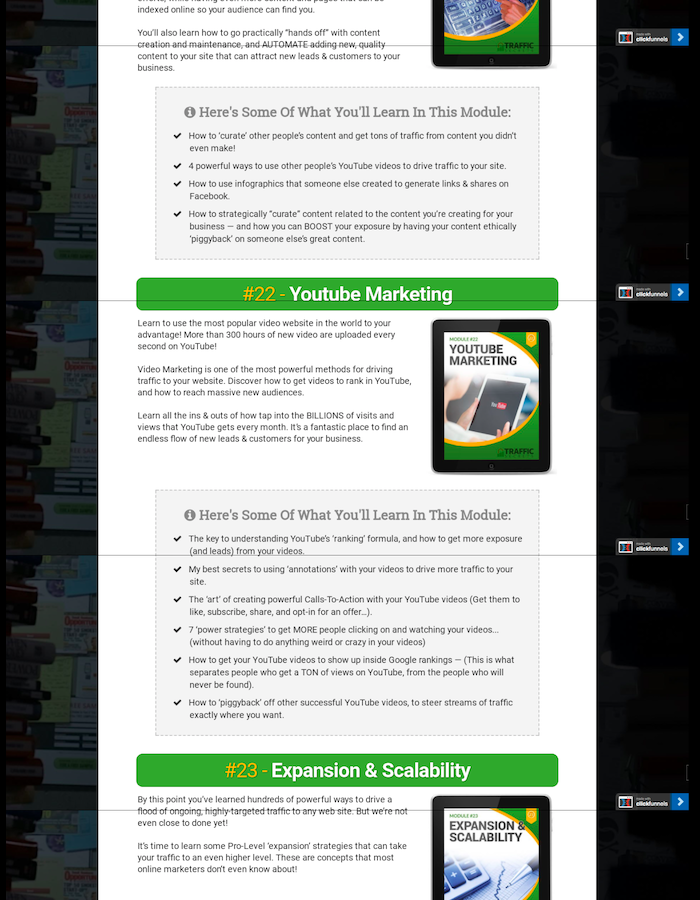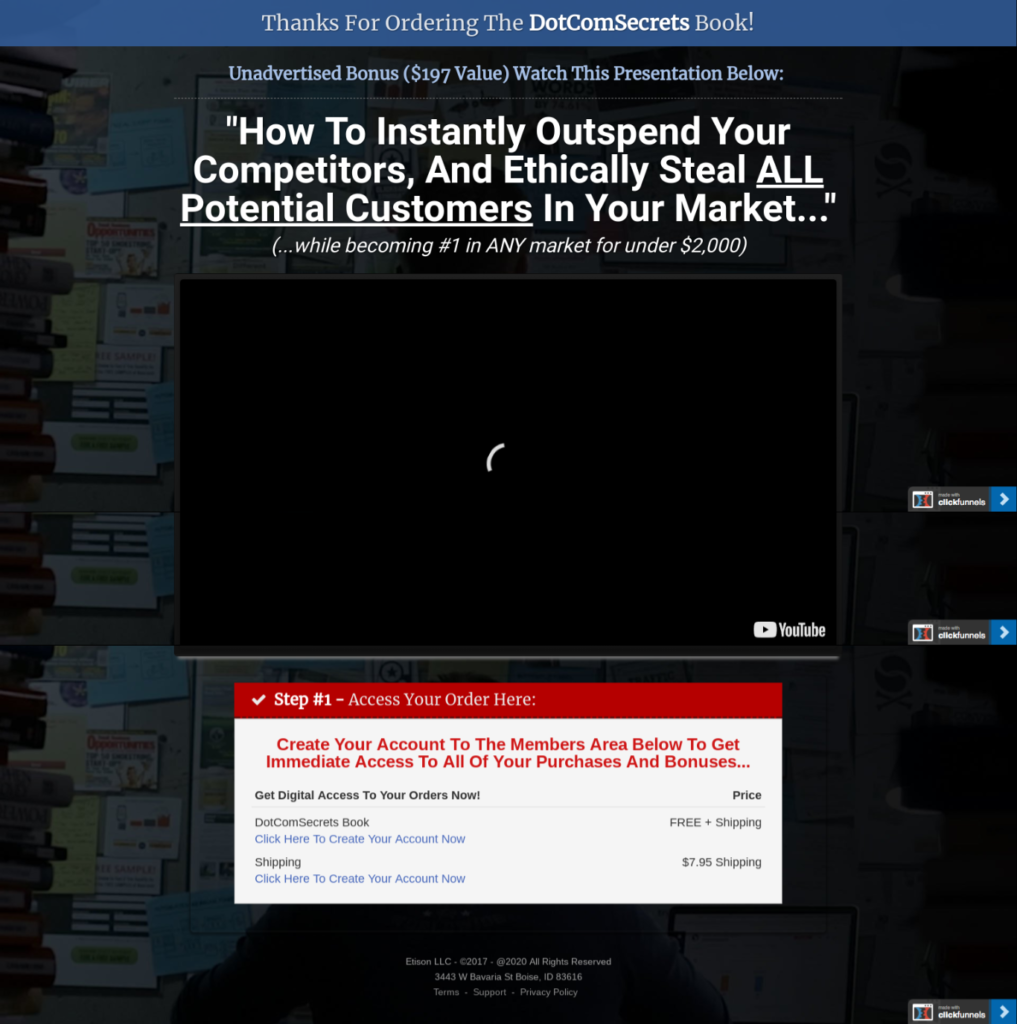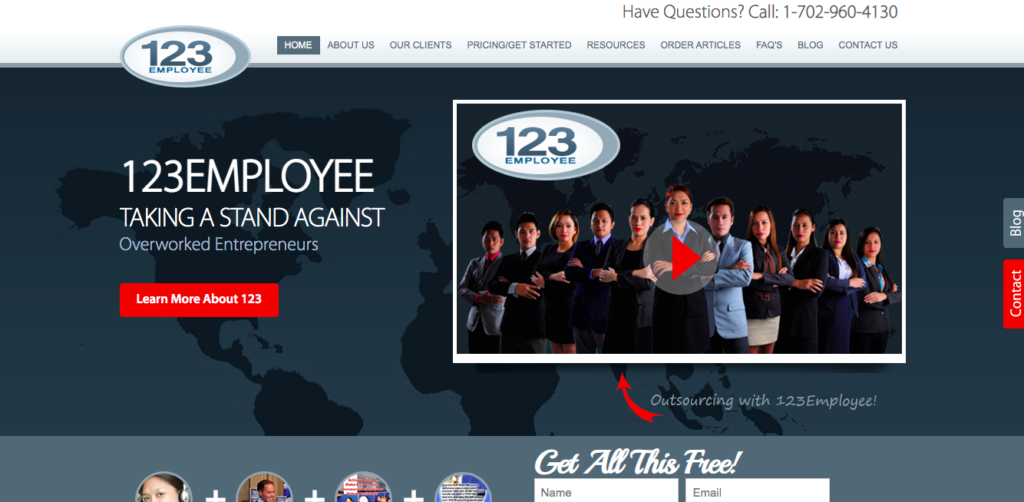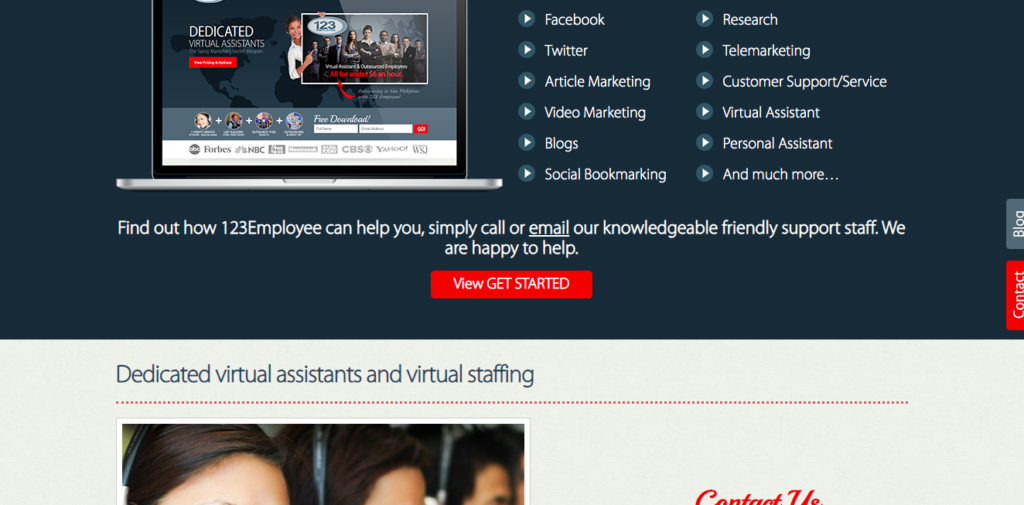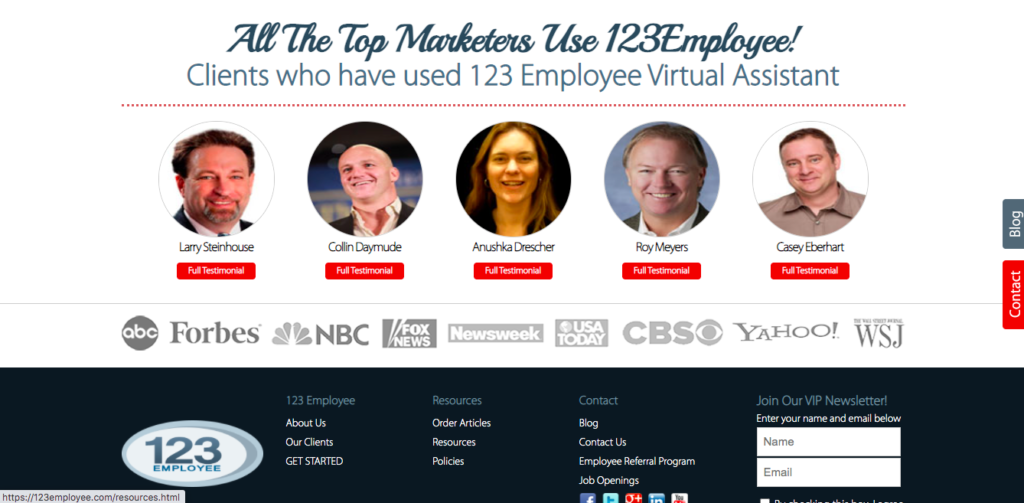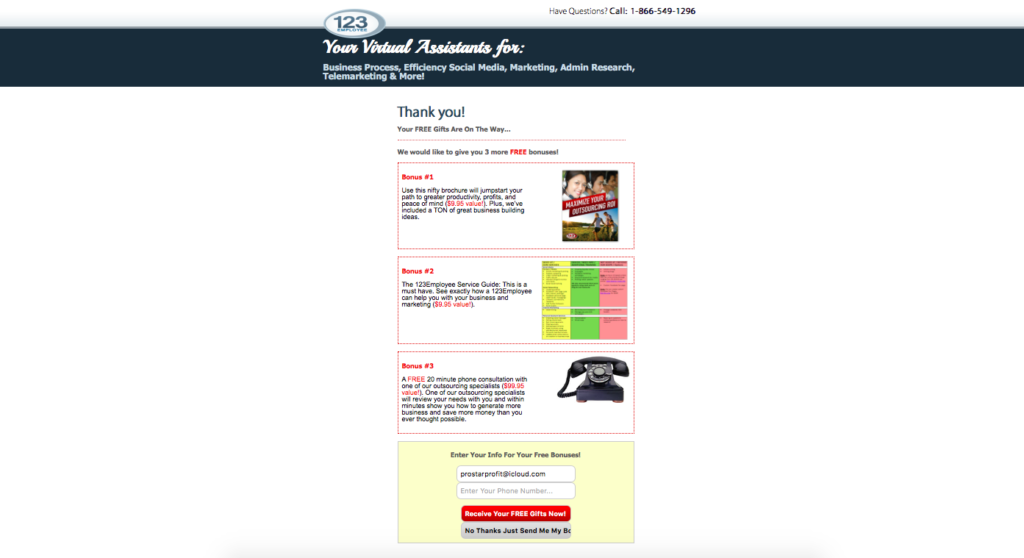Year: 2022
Habits Of A Six-Figure Earner Real Estate Agent



[adrotate group="1"]
[adrotate group="29"]
[adrotate group="30"]
Here’s what we learned from ActiveRain:
Demographics:
- Rich real estate agents tend to be MEN (58% male). Poor real estate agents tended to be WOMEN (60% female). 47% of the survey was male.
- Rich real estate agents have 11-20 years of real estate experience. Poor real estate agents had 4-5 five years of experience. The average was 6-10 years of experience.
- The average age of the respondent was 51-60 years old. S/he is a college grad with moderate technology experience. Age did not matter between rich and poor real estate agents.
What Seems to Matter:
- Rich Real Estate Agents invest 6x more in technology
- Rich Real Estate Agents BROADCAST via social media
- Rich Real Estate Agents upload video to Youtube
- Rich Real Estate Agents spend 10x more on marketing
What Doesn’t Seem to Matter (either it doesn’t matter or everyone is using it poorly):
- Real Estate Listing Websites – (Zillow, Trulia, and Realtor.com)
- Direct Mail
Rich real estate agents invest 6 times as much in technology as poor real estate agents. Every year the average rich real estate agent spends $3,000-5,000 per year on technology, while the poor real estate agent only spends $500-1,000 per year. (see the section “Business Capital) So, for every one
dollar that the poor agent spends on technology, rich agent spends six dollars. Think about this:The average rich real estate spends more money in a month, than some poor real estate agents spend on technology all year.


7 Strategies that Help You Reach Your Full Potential

[adrotate group="1"]
[adrotate group="29"]
[adrotate group="30"]
Have you failed to capitalize on the vast reservoir of potential that you believe is lurking within you? Are you willing to see how far you can go? There are many variables, and the odds are against giving maximal effort each day. However, it can be interesting to see what you can accomplish if you try. What have you dreamed of mastering?
[adrotate group="1"]
[adrotate group="29"]
[adrotate group="30"]
7 Simple Tips to Develop Greater Mental Clarity
[adrotate group="1"]
[adrotate group="29"]
[adrotate group="30"]
The ability to think clearly and accurately will never be overrated. Many of us walk around distracted or practically in a daze. This can be due to a variety of factors, including poor diet, a lack of sleep, or even a lack of understanding ourselves and our values. We live lives full of distractions that vie for our attention. Being more clear-headed can increase the level of success you enjoy and your overall sense of wellbeing.
[adrotate group="1"]
[adrotate group="29"]
[adrotate group="30"]
Launching A World-Class Joint Ventures
More than 5,000 joint ventures, and many more contractual alliances, have been launched worldwide in the past five years. The largest 100 JVs currently represent more than $350 billion in combined annual revenues. So it’s become clear to many companies that alliances—both equity JVs (where the partners contribute resources to create a new company) and contractual alliances (where the partners collaborate without creating a new company)—can be ideal for managing risk in uncertain markets, sharing the cost of large-scale capital investments, and injecting newfound entrepreneurial spirit into maturing businesses.
What’s less clear to these companies is how to overcome the many challenges inherent in implementing joint ventures and alliances. In 1991, we assessed the performance of 49 joint ventures and alliances and found that only 51% were “successful”—that is, each partner had achieved returns greater than the cost of capital. A decade later, in 2001, we assessed the outcomes of more than 2,000 alliance announcements—and the success rate still hovered at just 53%, despite studies that have highlighted the well-known reasons for JV failure: wrong strategies, incompatible partners, inequitable or unrealistic deals, and weak management.
Our most recent research, on which this article is based, confirms that the challenge continues. Why is JV success so elusive? We believe it’s because many companies overlook a critical piece of any alliance or JV effort—the launch planning and execution. Although most companies are highly disciplined about integrating acquisitions, they rarely commit sufficient resources to launching similarly sized joint ventures or alliances. Mistakes made during the launch phase often erode up to half the potential value creation of a venture. The launch phase—beginning with the signing of a memorandum of understanding and continuing through the first 100 days of operation—is usually not managed closely enough. This lack of attention can result in strategic conflicts between the allied companies, governance gridlock, and missed operational synergies. As one executive told us, “If we could improve our skills in one area, it would not be in deal making or ongoing management but in the launch phase. That’s where the rubber meets the road.”
Weak controls can cost the parent companies money and can expose them to unexpected risks.
JV Challenges
When an organization brings an acquired company into the fold, only one corporation exists after the deal, allowing for unilateral decision making. By contrast, after two companies agree to an alliance, there are still multiple parties (two parent companies, and, in many cases, a new company) dealing with disparate interests. This creates a unique set of challenges. (For an overview of the challenges companies face in launching JVs and alliances, see the exhibit “Clearing the Hurdles.”)
Clearing the Hurdles
The first challenge is building and maintaining strategic alignment across the separate corporate entities, each of which has its own goals, market pressures, and shareholders. If these individual interests are not addressed during the launch phase, conflicts will develop in crucial strategic areas. For instance, should the JV’s products or services target high-end or mass-market consumers? Should the venture’s reinvestment goals emphasize revenue growth or cash flow? Such conflicts can delay the venture’s development and can set the stage for costly compromises down the road. JV and alliance partners try to anticipate areas of potential misalignment during the negotiation phase—but many conflicts of interest surface only when the partners dig deep into operational details and start to run the business.
The second challenge is to create a governance system that promotes shared decision-making and oversight between the two parent companies. Even though a joint venture isn’t necessarily a marriage for life, governance problems can quickly trigger termination of the deal. Weak controls can cost the parent companies money and can expose them to unexpected risks. The secret to effective governance is balance: providing enough oversight to protect important assets without stifling entrepreneurship.
The third challenge that most joint ventures—and virtually all nonequity alliances—face is managing the economic interdependencies between the corporate parents and the JV. To avoid duplicating costs, most alliances are structured so that the parents continually provide financial capital, human skills, material resources, and marketing and other services. The parent companies generally do outline the broad extent of the economic interdependencies during the negotiation phase—but they often don’t quantify the specific resources and finances that should be flowing to and from each partner until the launch phase. Consider what Starbucks and PepsiCo did. In 1994, the companies formed their successful North American Coffee Partnership, a JV with more than 90% of the U.S. ready-to-drink coffee business. The venture was set up with fewer than a dozen full-time professionals, who have capitalized on the parent companies’ capabilities. Starbucks contributes services such as coffee purchasing and roasting, creation of beverage concentrates, and quality assurance. PepsiCo provides distribution of the JV products to grocery, convenience, and mass-market stores. The two companies jointly manage marketing and product development. And they agreed during the launch phase on specific ground rules for compensating each parent fairly for its contributions.
The fourth challenge is building the organization—a cohesive, high-performing JV or alliance—when most managers come from, will want to return to, and may even hold simultaneous positions in the parent companies. Many venture CEOs lament that alliances are treated as dumping grounds for underperforming executives, rather than as magnets for high-potential managers. Most companies that complete a merger dedicate a full-time team of their best leaders to integrate the target company. By contrast, many JV launch teams comprise a handful of part-time managers who are learning as they go. According to a board member of one successful multibillion-dollar JV, “We agreed to virtually every decision—picking the IT systems, selecting staff at every level—prior to closing the deal.” If organizations underinvest in launch project management, they can jeopardize the long-term health of their ventures.
Some guidelines for launch planning and execution apply to all JVs and alliances. The parents should appoint a launch leader (sometimes, but not always, the JV CEO) and identify deal champions. The latter are typically senior executives from each parent company who are known and respected across the organization and have a strong interest in the success of the joint venture. The parents should also assemble a dedicated and experienced transition team immediately upon signing the memorandum of understanding. This team is responsible for getting the business up and running. Its tasks include developing a detailed business plan, creating the 100-day road map that orchestrates the activities of all work groups, and intervening when the launch process veers off track.
Other requirements of launch planning vary based on the nature of the venture. There are basically four types of joint ventures: In the consolidation JV, the value of the alliance comes from a deep combination of existing businesses. In the skills-transfer JV, the value comes from the transfer of some critical skills from one partner to the joint venture—and sometimes to the other partner. In the coordination JV, the value comes from leveraging the complementary capabilities of both partners. And in the new-business JV, the value comes from combining existing capabilities, not businesses, to create new growth. The transition team should focus on maximizing operational synergies in the first two cases, and it should focus on understanding new or expanded market opportunities in the latter two.
Once the right launch team is in place and a time line has been set, the real work begins. Successful JVs tackle each of the challenges outlined previously. They preempt failure by exposing inherent tensions early in the process. They move quickly from general road maps to detailed, practical planning. They clarify strategy and governance, and they put in place the right incentives and processes to secure top talent and critical resources from the parents.
When Is a JV Worth the Trouble?
Some managers avoid or overlook the JV option because they aren’t sure at what point the advantages outweigh the ...
Resolving Strategic Conflicts Up Front
It is common for companies to assume that the JV’s strategy has already been defined during deal making and that the launch phase, therefore, is simply the time to implement a shared strategic vision. In our experience, it is virtually impossible to get into enough detail during the deal-making phase to surface and resolve all the strategic differences between the corporate parents.
Consider the following examples. Two large pharmaceutical companies formed a venture to expand the market for a specific class of drugs. Each partner contributed complementary patent-protected medicines within the drug class and regional marketing strengths to the JV. Yet once the JV was up and running, one parent wanted to promote its higher-margin, lower-volume products, while the other parent wanted to expand its market share for its products through aggressive pricing. The companies had failed to address this fundamental misalignment early in the process, and the venture struggled through two years of friction and weak sales before one partner ultimately bought the other out. In another consolidation JV between two global chemical companies, it was clear early on that one partner was more willing to invest in the venture than the other one was. The companies had different targets for return on capital and different perceptions of the long-term strategic benefits associated with the venture. The CEO of this joint venture was caught in the cross fire, lacking agreement from the parent companies about how and where the JV would compete and what level of investment was appropriate. In both cases, the companies had failed to discover strategic conflicts early enough in the launch process, when the partners might have been more amenable to negotiation. To root out these conflicts, companies should do the following:
Develop a VC-quality business plan.
Prior to closing the deal, the launch team, working with future management, needs to develop a detailed business plan. It should meet the same standards of rigor, detail, and logic that a venture capitalist would demand. To start with, the management team (the CEO, CFO, and COO) should meet off-site for two or three days with members of the JV board and the deal champions from both parent companies. The group should define exactly how and where the JV will compete, project how the JV might expand beyond its initial scope, set financial targets, plan capital expenditures, and create a blueprint for the organization. This work is then translated into a detailed business plan. It all sounds straightforward, but these meetings are often contentious precisely because they reveal gaps in strategic alignment.
The launch team, working with the JV board, also needs to draw up performance contracts that make key JV managers accountable for the success of the venture. The partners should clarify the resources, personnel, and behaviors required for the JV’s success so confusion about these matters won’t hamstring the people charged with running the venture day to day. Consider the following example: Four electric power companies interviewed for a CEO to run their proposed joint venture. One candidate was offered the position but took his time in deciding whether to accept. Before committing to the venture, he interviewed each board member to understand the parents’ objectives, revised the JV business plan, and proposed six specific objectives for the first nine months of his tenure as CEO. He then insisted on the collective endorsement of the JV board as a precondition to accepting the job, and he negotiated a compensation agreement that linked his bonus to these objectives. He also negotiated an employment contract that empowered him to make key operating decisions and choose executives. As he later explained, “In joint ventures, especially with many partners, there is a tendency for the partners to each make back-channel requests of the CEO and to try to influence the alliance through people they put into the JV. I was not going to put up with that. I needed all the partners to agree on the venture’s overall priorities and hold me responsible for executing against them.”
Successful alliances pay a lot of attention to communication—not just during the launch phase, but throughout the life of the venture.
Act quickly to manage inevitable setbacks.
A detailed business plan and supporting performance contracts are important, but they can’t prevent unpleasant surprises once the venture is launched. For instance, Starbucks and PepsiCo were forced to rethink the direction of their joint venture after the first product it introduced, a carbonated coffee drink, received mixed results in early tests with customers. “We had a great partner, a leveraged organizational model, but no product,” one Starbucks executive recalled. The partners ultimately redefined the JV’s product, drawing on the lessons they learned from those initial market tests.
Successful alliances pay a lot of attention to communication—not just during the launch phase, but throughout the life of the venture. For instance, senior management at TRW Koyo Steering Systems, a JV manufacturer of automotive components, followed a policy of “equal communications” with each of the parent companies (TRW Automotive and Koyo Seiko). When Arvind Korde, CEO of the JV, needed to communicate facts or issues to one parent, he always copied the other parent, thereby promoting openness and trust. And Korde and his team were quick to react to problems. One year into the venture, the JV was on the verge of securing its first customer, which exposed the parent companies’ difference of opinion around pricing. TRW, which was focused on profitability more than growth, argued for higher margins and prices. Koyo Seiko sought to build market share and maximize the scale of its global relationship with key Asian customers. “This was a real turning point for the JV,” Korde recalls. “Despite our early success, I wasn’t sure we would make it out of there alive.” Korde called an off-site meeting of his management team in which they experienced what he calls a “coming to Jesus” moment. In that session, the management team crafted a new vision for the JV and a constructive approach for resolving the conflict.
Achieving Loose-Tight Governance
Besides managing the parents’ goals and expectations, the launch team needs to focus on building an effective governance system for the JV or alliance. An appropriate structure should allow the JV management team to make timely decisions while providing the parents with sufficient oversight to protect their assets.
During the deal phase, most companies focus on the composition of the board, the parent companies’ veto rights, and the conditions for termination of the venture. But effective ongoing governance requires more than contractual agreements. Without the right launch planning, the typical JV contract is a recipe for disaster because every major decision is subject to board approval, which requires the agreement of both partners. The default process for resolving disputes is often, “Talk some more.” This usually results in strategic deadlock between the parent companies, followed by erosion of the synergy created by the deal and, often, termination of the venture. The launch phase is the time to go beyond the lines and boxes and address how decisions will be made and disputes resolved. To find the right balance between giving the JV enough autonomy and granting the parents enough control, companies should do the following:
Apply rigorous risk management and performance tracking.
Some companies grant the venture management team so much autonomy that it borders on negligence. This was the case in a billion-dollar industrial JV that combined similar business units to increase scale and reduce operating costs. During the launch phase, the partners failed to create adequate oversight mechanisms. Three years into the alliance, the U.S. partner was dismayed to discover that the JV had incurred a $400 million debt without ever having gone through either parent’s capital-budgeting process. In a second JV at the same company, one parent found that the venture was delivering an annual 3% return on invested capital, a figure well below its targeted rate of 14%. The JV was not part of the standard corporate-planning and strategy review forums and was never subject to the same level of scrutiny as the wholly owned businesses.
In the wake of Sarbanes-Oxley, companies have increased their attention to transparency, risk management, disclosure, and performance management in their wholly owned businesses. But our research shows that companies don’t evaluate the performance of their JVs as diligently as they do their wholly owned businesses with equivalent assets. That’s a mistake; parents need to treat their ventures and their wholly owned units similarly. This means, for large joint ventures, putting in place an audit process like the ones used at the best public companies, including an active audit committee and external auditors focused solely on the venture’s economics. It means building a strong finance organization inside the JV to make sure that the board and venture management have the critical information they need to do their jobs. And sometimes it means including the JV in at least one parent’s annual or semiannual corporate review, thereby ensuring transparency.
Streamline decision making.
Of course, some corporate parents go too far and implement governance systems that stifle entrepreneurship and create dysfunctional bureaucracy. During the launch of a $4 billion natural resource JV, the parent companies created a large board with subcommittees intended to be heavily involved in—but not accountable for—the day-to-day operations of the venture. All major decisions required multiple subcommittee and board meetings, interspersed with additional fact-finding efforts by the JV management team. Since each subcommittee met only four times per year, the time it took for the JV to make a decision became a distinct competitive disadvantage. As a result, profitability declined, frictions among the parent companies and the venture’s management escalated, and the parents had to completely restructure the JV’s governance approach.
Companies can avoid this governance trap by implementing a loose-tight governance model. (See the exhibit “The Loose-Tight Approach.”) In this approach, the partners identify the venture’s most important governance processes (for instance, setting strategy, allocating resources, or determining pricing) and then designate the appropriate degree of parental involvement for each. As a general rule, parent companies operating through a JV board should play an active role in the three governance areas critical to driving financial performance and protecting shareholder interest: capital allocation, risk management, and performance management. The parents should generally limit their interventions in more operational processes—such as staffing, pricing, and product development—where the JV needs independence to ensure competitiveness and market responsiveness.
The Loose-Tight Approach
Once a high-level governance road map is in place, the launch team needs to translate it into practical decision-making processes that are consistent with the parent companies’ formal and informal governance and influence structures. There are many ways to do this, but one effective approach is to map out each governance process, showing how information and decisions flow through the JV and parent companies. For example, a request for capital could originate within the JV’s manufacturing organization and be formally submitted to the board for approval. But the way the process might work in practice is for board members to survey the CFOs at each parent company to make certain that the proposal meets their individual capital-expenditure requirements and then convene an informal discussion with one or both parent CEOs to make sure they’re aligned. By mapping out both formal and informal decision-making processes, you can reduce the time and effort it will take to approve major initiatives.
The launch team needs to challenge—and limit wherever possible—the interdependencies between the parents and the JV.
Managing the Interdependencies
For practical reasons, most JVs depend on their parents to provide ongoing access to capital, people, intellectual property, raw materials, and customers. Both tangible and intangible contributions from the parents determine their actual return on investment. But much damage can be done if the details of those contributions aren’t worked out during launch. For instance, if transfer prices (the internal fees that one group charges another for a resource or a service) are not set appropriately, Parent A, who provides a resource to the joint venture, has an opportunity to supplement its returns “off the books” of the JV. When Partner B sees this happening, it uses the information to justify holding back its committed contributions, creating a loop of partner suspicion and distrust.
Winning JVs start to address economic interdependencies as soon as an agreement looks likely in order to avoid launch delays and the loss of millions of dollars in potential synergies. They make sure that the launch team contains appropriate expertise and authority to resolve important economic issues. Specifically, successful ventures do the following:
Dedicate resources to resolve interdependencies up front.
The process of sorting out who will provide what to the joint venture is time-consuming for everyone involved. In one high-tech consolidation JV, the partners spent 10,000 man-hours over four months determining precisely which services and resources each parent would provide the JV and constructing service-level agreements that specified transfer pricing, access rights, and other critical terms of the deal. The work can’t be postponed just because it is contentious and resource intensive. According to one JV executive we spoke with, “Shared services are often a critical part of determining total venture economics and how the value is distributed between the partners.” In the high-tech consolidation JV, the partners formed a small transition services team that identified the economic interdependencies across the 20 launch teams. This group established criteria for determining which services the JV would purchase from the parents. It then documented the shared resources and services and collaborated with the purchasing and finance teams to price each shared service.
Challenge and limit interdependencies.
One of the most valuable tasks of the launch team is to challenge—and limit wherever possible—the number of interdependencies between the parents and the JV. Working teams in the high-tech consolidation JV initially generated a list of more than 1,000 dependencies upon one parent—that parent was slated to provide administrative services, component purchases, and shared research facilities, among a slew of other resources. Recognizing that a heavy load could create unmanageable complexity down the road for the parent company, the launch leaders challenged virtually every line item on the list. Eventually, they whittled it down to just 300 services that the parent would provide the venture in the first year and less than ten services in the second year and beyond.
Once a list of shared services is finalized, the launch team must develop transparent and honest methodologies for calculating transfer pricing. This is critical for maintaining trust down the road. A 50-50 telecom joint venture depended on one parent for 90 different shared services. Two years into the JV, a strategic review revealed that this partner was allocating its corporate overhead and other nonshared costs to the JV, thereby creating significant profits for itself while hampering the venture’s ability to set competitive prices and make a profit. The partners did renegotiate transfer pricing, but the distrust that was created continues to plague the venture.
Parent companies need to move outside their comfort zones when devising an organizational structure for their JVs.
To avoid this situation, the launch team should agree at the outset on the methods for allocating costs, specifying which operating costs should be included (for instance, customer billing or maintenance) and the basis upon which to allocate each shared cost (for instance, per subscriber, per region, per dollar of revenue). The launch team should also establish a way to benchmark the parents’ internal pricing and quality of service against those of outside vendors and suppliers. And the launch team should specify a path for resolving contentious economic issues.
Finally, the JV should be linked to the corporate review and planning cycle of at least one of the parents, reducing the odds that important economic issues will fall between the cracks and require 11th-hour intervention.
Building the Organization
Parent companies may need to move outside their comfort zones when devising an organizational structure for their JVs, adopting a staffing model, and designing incentive plans. There is a tendency in many JVs that combine existing organizations to select a familiar organizational model—either a regional one, if the parents are contributing assets from different regions, or a product-division structure, if each parent is contributing different products. This simple approach allows each parent to protect its turf and minimize organizational disruption—but it also dilutes the potential effectiveness of the new organization. If the parents try to preserve the status quo, they risk reducing the synergies between them. And let’s not forget that companies are often attracted to the JV structure precisely because of their need for a new model and mind-set to compete in a new business. The creation of a joint venture is an opportunity to unfreeze the organization. Beyond the issue of formal structure, a successful JV launch requires taking the following approaches to staffing and incentives.
Choose your organizational model carefully.
There are three basic organizational models for joint ventures: independent, dependent, and interdependent. The independent model, pursued by companies such as Carlson Wagonlit Travel and Marathon Ashland Petroleum, lets companies create new and often more entrepreneurial cultures. The independent JV typically has an entirely separate reporting structure from the parents, its own facilities, and the freedom to source from external as well as internal suppliers. This model allows venture management to have greater focus and unity of purpose, but it also requires the venture to establish and maintain separate HR systems. This can make it harder to recruit potential managers who would prefer the wider career opportunities offered by the parent companies.
Some companies go to the opposite extreme and create dependent JVs. This type of JV operates as a business unit of one parent and uses that parent company’s incentive systems and HR policies. BP and Mobil used this approach when creating two JVs in their downstream European oil businesses: The refining venture operated as a BP business, while the lubricants venture operated as a Mobil business. The advantages here are opposite those of the independent JV. There is no need to create a separate HR system for the venture, and the managing parent ensures that the venture’s high performers get equal access to promotion opportunities within the wholly owned businesses. But the dependent model limits the JV’s ability to share people and skills with the nonoperating partner and gives that partner less influence in the JV.
The third model, the interdependent JV, is tough to execute but is by far the most commonly implemented structure. Members of the management team maintain links to their original corporate parent. They remain on the same compensation plans, anticipate future career moves back to the parent, and sometimes have dotted-line-reporting relationships to an executive in their parent organization. The interdependent model protects career paths and offers maximum flexibility, but it can be complex to manage and can perpetuate divided loyalties.
In one billion-dollar global media JV, the management team remained culturally divided into U.S. and German camps two years after the venture’s formation. This interdependent JV was operating in a mature sector, and the partners had agreed to rotate the senior positions between them every three years—which created a questionable career path for those deciding to stay at the JV. To make matters worse, the venture was functioning at a significant talent disadvantage. Those managers who performed well were repatriated back to the parents, while those with mediocre performance remained at the venture. This JV was further bedeviled by unclear reporting relationships. For example, a senior-ranking German manager in the JV routinely communicated privately with a senior board member from the German parent (who was his former boss). As a result, the JV CEO had to treat his second in command as a board liaison rather than a direct report, making it difficult to hold his feet to the fire on performance issues.
Unfortunately, this is not an isolated case. Many JVs are held back because they offer the wrong incentives and are unclear about accountability. And the problems are not limited to the senior management team; they spread throughout the venture, even back to the support staffers who remain with the parent organizations.
The disadvantages of the interdependent model can be mitigated if the JV CEO is empowered to write performance reviews and to make all hiring and firing decisions; if all parties agree up front on performance criteria; if a minimum tour of duty is established within the venture, typically three years; and if the parents aren’t allowed to poach from the venture until that tour of duty is up.
Make people want to join the team.
Regardless of the organizational model, the launch team must create a compelling value proposition that makes good people want to join the team. For start-ups, the excitement of building something from the ground up is often sufficient to attract motivated players. In difficult turnaround situations, the compensation upside might be essential (lower base pay but higher bonus or stock options than in the parent companies).
Personal considerations cannot be underestimated. Everyone wants to work for a motivational leader, and selecting a CEO who inspires loyalty is the best way to build a strong new business. This is especially important in interdependent JVs, where personal loyalty to the JV CEO can help unite the management team and overcome the employees’ natural affiliations to one parent or the other. The physical proximity of key members of the JV management team is also important for accelerating team building.
The value in creating a strong management team and a motivated staff is obvious. It’s equally important to get the staff inside the parent companies on your side. Two groups are worth special attention. The first is the handful of parent company managers who possess distinctive skills that need to be transferred to the joint venture, such as R&D, product marketing, or manufacturing process design. The second is the broader set of employees performing day-to-day work for the JV, who continue to reside in a parent company.
Obtain commitments from parent company staff.
Top-performing companies recognize that skills are transferred by people, not by processes or contracts. Failure to acknowledge this can be costly. For instance, a global consumer goods company held a 50% stake in a partner in a developing country; the resulting JV was looking to the global partner to transfer some of its operating and marketing expertise into the developing-country partner’s underperforming beverage business. The JV requested from the global partner two or three people highly skilled in emerging-market branding and marketing. The parent offered very limited support from its developing-country gurus; instead, it sent a marketing executive who had spent most of his career in North America. Lacking access to crucial skills, the JV couldn’t prop up the declining brand and failed to capture half of the expected synergies, or around $450 million.
Getting sufficient time and attention from a few topflight people is often critical to a JV’s success. Managers at the parent companies often assume that these individuals will contribute their magic to the venture regardless of formal allocations or incentives. To be certain that these valuable players do inject their crucial know-how, the JV launch team needs to identify them right away and create mechanisms to involve them heavily in the first six to 18 months of operations. For example, the CEO of a successful U.S.–Japanese JV spent two weeks during the first month of the venture in Japan finding local managers who truly understood what it would take to build a world-class manufacturing line in the United States. He then persuaded the managers to come to the States for up to a year, where they could have a direct, immediate impact on the layout and operations of the new plant.
Once the skill holders are identified, successful companies create formal contracts for them that define their levels of commitment to the JV (usually 50% or more of their time to ensure focus and accountability) and the metrics by which their performance will be evaluated and rewarded. The launch team also needs to create incentives for parent company employees who spend less than half their time on the JV—for instance, sales reps, administrative staff, and others—so that they are motivated to provide strong support.
For example, two software companies recently created a JV to combine the field sales capabilities of both parent companies. The JV’s products would be sold through the venture itself, as well as through both parents. To rally disparate salespeople around this goal, the sales and marketing launch teams focused on developing rules of engagement for all three sales groups (product pricing and positioning, and the management of joint accounts); defining incentives for all the salespeople; and developing mechanisms for building and transferring product knowledge among the sales forces—a critical issue, since the JV would be developing and manufacturing the products.• • •
Launching a world-class joint venture is complex and demanding. Research shows that it can, in fact, be more resource intensive than postmerger integration or internal business start-ups. Best-in-class companies manage to do it well, sometimes over and over again. They execute the classic launch tasks (organization building and project management) well. They also maintain an intense focus on issues like strategy, deal economics, and governance that most companies assume have been discussed and resolved up front. When executives understand the unique demands of joint ventures, and invest in early planning, the rewards can be enormous. As one manager summed it up: “If you get launch right, the rest almost takes care of itself.”
About the Research
To better understand the challenges of JV launch, we and our colleagues in McKinsey’s postmerger ...A version of this article appeared in the February 2004 issue of Harvard Business Review.
https://hbr.org/2004/02/launching-a-world-class-joint-venture
I Want To Pay You $93.50 For Each Of Your Contacts Email – To Help Grow Local Companies!


[adrotate group="1"]
[adrotate group="29"]
[adrotate group="30"]
Introduction:
Alright, listen up, folks! We're diving deep into the quest for more money and leveling up those businesses. Brace yourselves, 'cause the market is overflowing with so-called experts and seductive opportunities, all promising to make you filthy rich. But here's the deal: Those promises aren't gonna work the same magic for everyone. Why? Because these con artists are masters of deception, armed with more gimmicks than a clown convention.
If you wanna boost your chances of hitting that sweet success, it's time to team up with legit businesses that actually deliver value to the community. Trust me, it's worth it. And guess what? I've got the goods to back it up. Check out this graph in the workbook. It spills the beans on the top five industries that have churned out the most millionaires: real estate, auto dealerships, medical offices, and restaurants.
So, what's the moral of the story? Don't get sucked into those shiny shortcuts and snake oil salesmen. Partner up with real businesses that are out there doing some good. And remember, according to this fancy graph, these industries are where the big bucks are hanging out.
Stay smart, stay savvy, and go chase that moolah!

Why Are We Doing This?
Hey there, folks! Time to dive into the world of making money and improving your businesses. The Direct Marketing Association has some interesting stats for us. They say that each email newsletter subscriber is worth a sweet $187 over their lifetime. And get this, for every dollar you spend to get a new subscriber, you can make $40 in return. Talk about a bang for your buck!
Think about it like this: Spend a dollar, make $40. Spend $2, make $80. How many times can you do that? As many times as your crazy, money-loving heart desires!
Our friend Russell Brunson, who's been keeping an eye on over 100,000 small businesses, found that an email newsletter subscriber can be worth a mind-boggling $500 every single month. That's some serious cash flow!
Now, I'm guessing many of you have tried your hand at making more money before. And let me tell ya, the marketplace is filled with self-proclaimed gurus and shiny opportunities promising to make you rich. But here's the truth: It's unlikely you'll see the same results they claim. Why? Because there's a whole bunch of tricks and gimmicks out there, making it nearly impossible to succeed.
But fear not, my friends! I've got a tip for you. Increase your chances of success by working with real businesses that offer real services to your community. Take a peek at the graph in the workbook. It reveals the top 5 businesses with the most millionaires: real estate, auto dealerships, medical offices, and restaurants. These industries know how to rake in the dough!

According to the fancy statistics, the top 5 industries with the highest likelihood of turning someone into a millionaire are: real estate (43.2% millionaires), real estate activities (25.2% millionaires), auto dealers (20.8% millionaires), financial services (18.5% millionaires), and independent artists and creatives (12.5% millionaires). Oh, and let's not forget about other professional sectors (10.6% millionaires) and wholesalers (10.0% millionaires) — they offer some golden opportunities too.

So instead of chasing after tricky shortcuts and gimmicks, focus on teaming up with real businesses and helping them thrive. Remember, you don't have to be super rich, just aim not to be poor. That's the name of the game!
[adrotate group="32"]
What Do You Understand About Leverage:
Alright, skeptics, let's have a little chat about making money. You know, every now and then I come across these doubters who demand proof of proven methods to rake in the cash. And I can't help but crack a mischievous smile, 'cause they clearly don't understand the power of leverage.
See, these folks are used to working a standard 8-hour day and getting paid for those precise 8 hours. If they wanna make a sweet $100,000 in a year, they gotta earn at least $50 per hour, grinding away 40 hours a week for 50 weeks.
So, naturally, when they hear stories of someone hauling in $100,000 over a single weekend, it just doesn't compute for them. It's like they're stuck in a mental maze, unable to wrap their heads around it.
But here's the secret sauce: When someone has put in the time to build a massive following, they only need a small fraction of that army to respond to their call and bam! They've made enough money to take care of their family.
Now, mind you, building such a loyal following takes a whole lot of time and effort. It ain't no walk in the park. But imagine how much easier it would be if you could hitch a ride on someone else's success train. Find yourself a successful somebody with their own legion of fans, and have them give you the thumbs-up, endorsing you and what you bring to the table.
Oh, the possibilities, my friends! So, don't get stuck in the old ways of thinking. Embrace the power of leverage and watch your dreams take flight.
[adrotate group="32"]
My First $10,000 Day:
Picture this: The very first time I tried this method, I struck a deal with a guy named Joel Broughton. He sent out an email to his customer base, giving his seal of approval to what I had to offer. And guess what? In just 6 short hours, that email brought in a whopping 141 sales. Boom!
You see, while most companies focus on acquiring customers one by one, we take a different approach. We dive into joint ventures, also known as "group marketing." This fancy tactic allows us to snag a single customer who can bring in a whole army of new customers. We're talking hundreds, thousands, or even tens or hundreds of thousands, depending on the size of the deal. That's how we roll!
Let me give you an example to chew on. We scored a deal with a local company that had around 4,200 customers or patients at the time. Then, we joined forces with another company, adding another 3,000 to 4,000 customers to our potential pool. Now we're sitting pretty with over 8,000 potential customers or patients.
And guess what, my friends? With this kind of following in our back pocket, we can start working with even more successful companies or practices. We've got 8,000 folks to work with now, and we can level up by teaming up with someone who's got 16,000 customers or patients. The numbers just keep growing exponentially. We're talking 8,000 to 16,000, to 32,000, to 64,000, to 128,000, to 256,000, to 512,000, and finally, to a whopping 1,024,000 customers or patients.
When you've got that kind of endorsement from all these people, can you even fathom how many of 'em will start doing business with you? It's mind-blowing!
You know, some folks spend years trying to build up a client base or a decent income. But guess what? By leveraging someone else's following, you can slash that time down to just a matter of days or weeks. Yeah, you heard me right!
Let me give you a couple more examples to get those gears turning. Take Jeff Walker, for instance. He made zilch for 6 long years. But once he started leveraging someone else's following, he raked in a cool $3.5 million over a 35-hour period. Talk about a power move!
Oh, and don't forget about Al Nin. We teamed up with his dentist and reached out to several beauty salons. In just 90 days, we attracted a whopping 3,200 new patients. And get this, the average profit per patient was $2,000, totaling a jaw-dropping $6.5 million in just 12 months. Cha-ching!
These are just a couple of examples that prove how working together can make providing for your family a whole lot easier.
Now, listen up. Many of you already have a following on social media big enough to make your first $100,000. Yeah, it's within reach!
And for those of you looking to make a decent income, even just $1,000 to $12,000 a week, all you need is something as simple as delivering flyers that direct people to a website where they can sign up for your email list. Easy-peasy!
You know, there's a ton of hype around social media these days. But when it comes to making money, let me tell ya, email is where the big bucks are. More money is spent on email than on any other marketing channel. Remember that!
So, my friends, go forth, work together, and watch the magic unfold. You've got the power to achieve great things.
[adrotate group="32"]
My $400 Million Dollar Company:
Well, well, well, nice to meet you all again. Allow me to reintroduce myself. I'm Christopher Brown, and in my previous gig, I rocked the business strategist role at a monstrous $400 million marketing firm. During my time there, I had the pleasure of collaborating with big-shot executives from companies like Ancestry.com, Crete Trucking, and Proctor and Gamble.
Now, let me spill some insider knowledge I picked up from my coaching sessions with these top-notch execs. We call it The Billion Dollar Blueprint. Yeah, it's a fancy term, but it's not just for the billion-dollar companies—it works wonders in the online world too.
Sure, there are those rare "unicorns" that skyrocket to billions, like when Facebook scooped up Instagram. But here's the kicker: Smaller companies can reach their financial goals in as little as 90 days by putting The Billion Dollar Blueprint into action. That's right, folks, it's a shortcut to success!
Based on my experiences with these killer companies, I've crafted something special just for you. You won't need to buy a ton of products to sell on Amazon or create your own digital goodies. We've made things easy-peasy for you. Through our amazing software, trusted by top experts like Dean Grazisoi, Grant Cardone, Tai Lopez, and others, we offer an auto sales closing system. This system covers all the bases: generating interest, capturing leads, presenting products, closing sales like a boss, and following up with potential customers using not one, not two, but nine different categories of income streams. Bam!
Remember that TV show "Undercover Billionaire"? Yeah, the one where Ben Sterns in Season 1 and Grant Cardone in Season 2 were dropped in unfamiliar territory with just $100 and no contacts. Well, guess what? They built a massive $5 million empire in just 90 days by leveraging the success of others. Impressive, huh?
Now, I know the idea of leveraging someone else's following to build your own customer base might sound intriguing. But I get it, turning that idea into action can be a bit overwhelming. That's why I'm here, folks. I'm inviting you to join our awesome team, where we work together to conquer challenges and achieve that sweet, sweet success.
So, what are you waiting for? Let's move on to the next module and see how this badass blueprint can change your life!
[adrotate group="32"]
Conclusion:
I've got something exciting to share with you. I know you love the idea of making a sweet $93.50 for every email in your contact list. I mean, who wouldn't, right? But let's be honest, turning that idea into reality can be a real pain in the you-know-what. So here's what I'm gonna do for you—I want to invite you to check out Iwanttopayyou.com.
Yeah, you heard me right. Iwanttopayyou.com is where the magic happens. It's the place where dreams come true, where money flows like a river, and where you can finally see that moolah rolling in. Sounds pretty damn good, doesn't it?

[adrotate group="1"]
[adrotate group="29"]
[adrotate group="30"]



